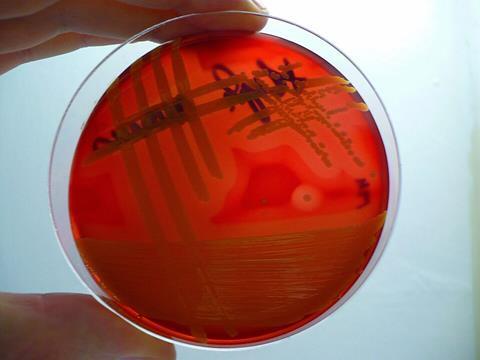The global fight against infectious diseases faces two major challenges: the threat of new pandemic outbreaks and the alarming rise of antimicrobial resistance driven by the excessive use of antibiotics. As pathogens continue to evolve and spread, researchers are urgently seeking innovative technologies that can effectively combat viruses, bacteria, and fungi conveniently in everyday settings.

Two-dimensional nanomaterials have emerged as promising candidates in this search. Hydrogen boride (HB) nanosheets, initially invented by Professor Takahiro Kondo at the University of Tsukuba and his team, represent an exciting new frontier. Initially explored for potential applications in electronics, energy storage, and catalysis, the interactions between HB nanosheets and biomolecules have remained largely unexplored—until now.
READ MORE: Newly designed nanomaterial shows promise as antimicrobial agent
READ MORE: Silicon spikes skewer 96% of virus particles
In a recent study, a research team involving Professor Masahiro Miyauchi and Associate Professor Akira Yamaguchi from the Department of Materials Science and Engineering at Institute of Science Tokyo, Japan, together with graduate student Andi Mauliana, Professor Takahiro Kondo from the Institute of Pure and Applied Sciences at the University of Tsukuba, Professor Takeshi Fujita from the School of Engineering at the Kochi University of Technology, researchers Dr. Kayano Sunada, Dr. Keiichi Kobayashi, Dr. Takeshi Nagai, and Dr. Hitoshi Ishiguro from Kanagawa Institute of Industrial Science and Technology, has discovered that HB nanosheets exhibit excellent antibacterial, antiviral, and antifungal properties.
Their paper, which was published online in Volume 13, Issue 19 of the Journal of Materials Chemistry B on April 23, 2025, highlights the remarkable ability of this nanomaterial to inactivate a wide range of pathogens, including viruses, bacteria, and fungi.
Transparent films
The researchers first fabricated transparent films by coating glass substrates with a dispersed solution of HB nanosheets. They then tested these films against a wide variety of microorganisms. Remarkably, the coated surfaces exhibited exceptional antimicrobial performance, inactivating the SARS-CoV-2, influenza, and feline caliciviruses down to detection limits within just 10 minutes at room temperature—without the need for light activation.
Similar effects were observed against various bacteriophages, and multiple types of bacteria, such as Escherichia coli and Staphylococcus aureus, and fungi, such as Aspergillus niger and Penicillium pinophilum.
The ability of HB nanosheets to inactivate these bacteria and fungi to the detection limit confirms the effectiveness of this material in combating a variety of microbial agents. The team then investigated the underlying mechanisms behind this broad-spectrum antimicrobial activity, revealing that it originates from the nanosheets’ ability to denature microbial proteins through strong physicochemical interactions.
Optical clarity
What makes these findings particularly exciting is the versatility of HB nanosheets as transparent coating materials. Unlike metal-based antimicrobials, which may leach or lack transparency, and photocatalyst-based coatings that require ultraviolet light activation, HB nanosheets function effectively in darkness and maintain optical clarity.
Laboratory tests further demonstrated their effectiveness under dry conditions, mimicking real-world scenarios where pathogens might be transferred by coughing or sneezing onto everyday surfaces. Amid concerns of another pandemic like the COVID-19 outbreak, HB nanosheets can be applied as transparent coatings for items and textiles to reduce infection risks. Additionally, due to their antifungal properties, they could also be used on various materials to help maintain cleanliness in everyday surroundings.
Overall, HB nanosheets offer a promising technology for creating safer environments and reducing pathogen transmission in daily life.
Topics
- Akira Yamaguchi
- Andi Mauliana
- Antimicrobials
- Asia & Oceania
- Aspergillus niger
- Bacteria
- bacteriophages
- COVID-19
- Escherichia coli
- feline caliciviruses
- Fungi
- Hitoshi Ishiguro
- hydrogen boride nanosheets
- Infection Prevention & Control
- influenza
- Innovation News
- Institute of Science Tokyo
- Kanagawa Institute of Industrial Science and Technology
- Kayano Sunada
- Keiichi Kobayashi
- Kochi University of Technology
- Masahiro Miyauchi
- One Health
- Penicillium pinophilum
- SARS-CoV-2
- Staphylococcus aureus
- Takahiro Kondo
- Takeshi Fujita
- Takeshi Nagai
- University of Tsukuba
- Viruses







No comments yet